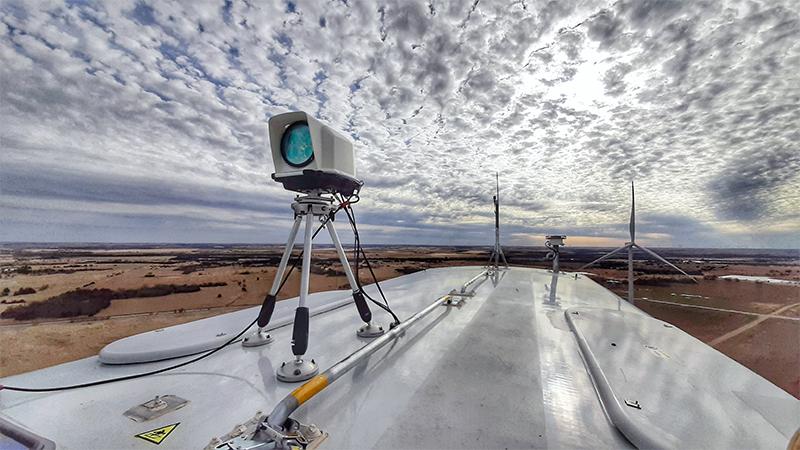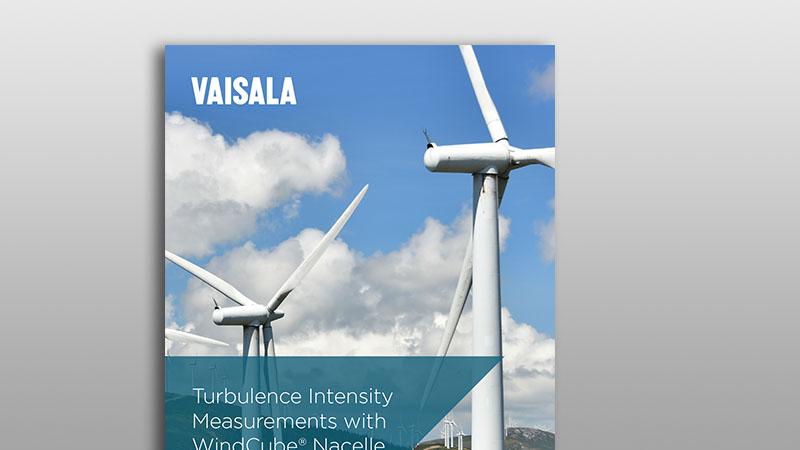WindCube Nacelle TI algorithm
Vaisala recently published an informative white paper, Turbulence Intensity Measurements with WindCube® Nacelle, written by Vaisala scientist Zhi Liang. The paper fills a gap in the availability of comprehensive reports that demonstrate how nacelle-mounted lidar — and particularly Vaisala WindCube® Nacelle — provides accurate Turbulence Intensity measurements suitable for use in the wind energy industry. Here are the highlights and key takeaways from the white paper.
WindCube Nacelle is a nacelle-mounted lidar that provides reliable wind data at multiple distances in front of a Wind Turbine Generator (WTG) to achieve quick and accurate Power Performance Tests (PPT), at low operational costs and in conformity with industry best practices. The IEC 61400-50-3 standard was released in early 2022, which provides important guidance for the wind industry for the use of nacelle-mounted lidar and standardizes the PPT procedure. WindCube Nacelle is the first lidar classified according to the IEC 50-3 standard.
Turbulence Intensity (TI) is one of the most important wind-related parameters, and is widely used in many applications, such as the verification of PPT, the load estimation of WTG, and the assessment of turbine micro-siting. TI can manifest as gusts, eddies, and fluctuations in wind speed.
Today, several works and results evaluate the accuracy of TI measurement by wind lidar. But comprehensive reports are still lacking, especially for nacelle-mounted lidar. This white paper summarizes the results of TI measured by WindCube Nacelle using two measurement approaches in several field campaigns.
Key algorithm for accurate measurements
The overall algorithm on the TI calculation used by WindCube Nacelle can be summarized in four steps:
- Compute 10 minutes averaged wind speed and Standard Deviation for each of four beams using 1Hz data
- Divide Standard Deviation by Line-of-Sight (LOS) mean wind speed to calculate the TI for each beam
- Compute TI+ and TI- using the mean TI from the two upper and lower beams
- Compute TI at hub height from TI+ and TI- by a logarithmic interpolation law
As part of the WindCube Nacelle algorithm improvements, a new filtering method is added in Step 1 that removes the wind speed outliers for the Standard Deviation calculation. This filtering method significantly improves the TI measurement accuracy.
Measurement approach
The measurement approach is very important to understand the capability on TI accuracy. Typically, there are two approaches to compare the nacelle-mounted lidar measurements with anemometer: White Box Comparison and Black Box Comparison. White Box Comparison can be used to evaluate the direct capability of TI measurement of the laser itself, while Black Box Comparison provides the final accuracy of TI after the Wind Field Reconstruction (TI at hub height). For wind energy applications, the 10-min averaged wind speed and TI are widely used.
Based on the White Box Comparison, the results of turbulence measured by WindCube Nacelle are quite promising. The lidar measures wind speed and turbulence along the LOS and provides 1Hz data, which provides information for the spatial and temporal structure of the atmosphere turbulence.
For the Black Box Comparison, two sites were used: one in Denmark and the other in the USA. The results of the Black Box comparison show high correlation coefficient and accuracy of TI measured by WindCube Nacelle compared to the met mast as well as high data coverage percent of valid TI measurements.
Proven accuracy for the wind industry
The results of the three measurement campaigns provide comprehensive and useful information on TI measurement by nacelle-mounted lidar. The high measurement accuracy and data coverage of TI proves that WindCube Nacelle is ready for industrial applications of TI measurements.
This white paper shows the improvement of TI measurement and provides contributions to the measurement of the temporal-spatial structure of turbulence in the low Atmospheric Boundary Layer in the future.
*Photo courtesy of ENGIE


